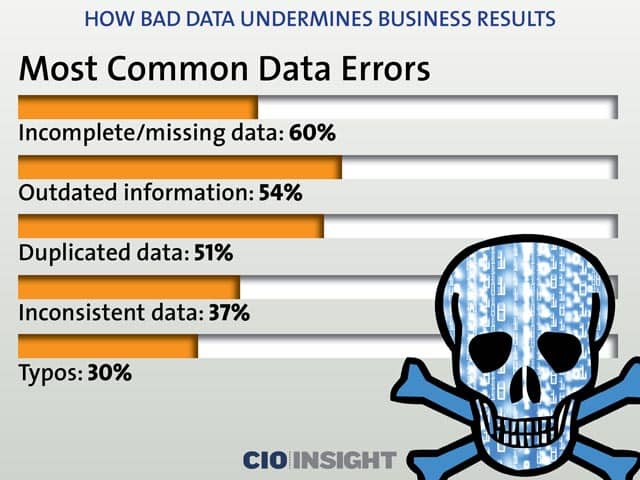Working in data storage in my earlier years, there was always an element of what type of data would be stored on the storage we would architect so that we would get a feel for the performance and capacity required to hold that data – this discussion would naturally lead onto data management, its lifecycle and what it needs to do once it expires.
In a bid to expand the conversation (and sometimes the sale), someone in the room would always ask about data quality, and what software do we have to help to ensure that high data quality exists throughout the complete lifecycle of the data when it is created and stored.
The outputs are only as good as the inputs, and if you feed an analytics engine or database dirty data then you can expect to fall down a rabbit hole – especially if your organisations relies heavily on this information to make key business decisions.
Take a look at the following statistics that I came across a year or so ago (I’m glad I saved this):
All of these factors can have huge implications on achieving business results, not surprisingly over half of the errors are attributed to having no data at all! So how does one prevent making bad decisions with bad data?
It all starts with how you architect data collection points and its relevant data types – take a web form for example. Now I know if you are reading this, then no doubt you would of had to fill in a web form multiple times during your life, whether it is to create a new account on a new social media platform, or to fill in a survey. You might of noticed that some of the drop down boxes only allow certain syntaxes and formats in the bid to ensure accurate data – like typing an email address without the @ sign should not be accepted.
If these measures are not in place, then the end result is a bunch of useless data that is not accurate and likely going to cause your organisation headaches (you can’t email a prospect with no @ in their email). This leads to lost sales, mistakes, and a lot of administration time trying to clean the data.
My next post in this area will dive a little deeper, and provide some fundamentals on how your organisation can architect a robust data quality and management strategy.



